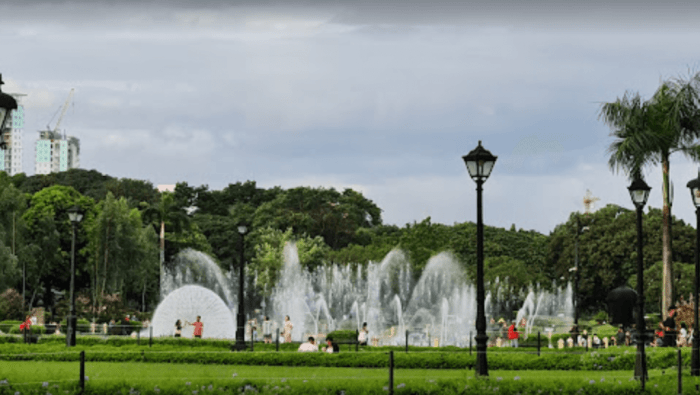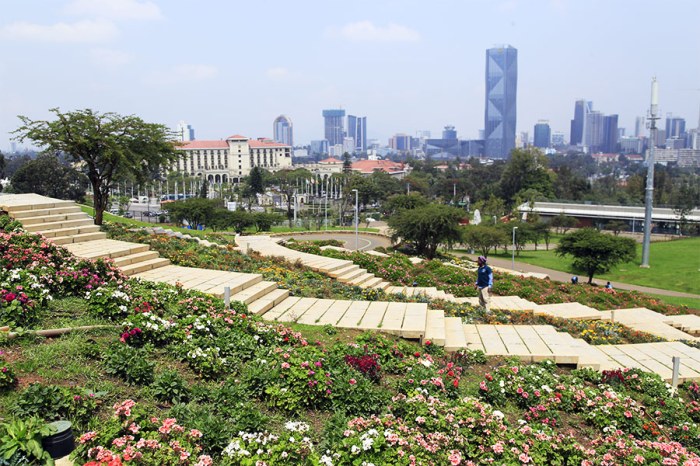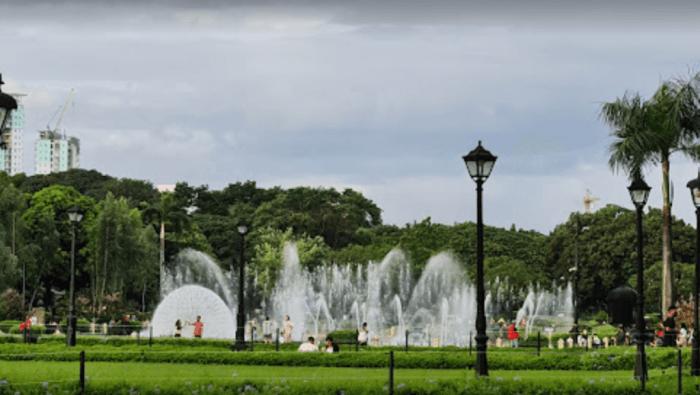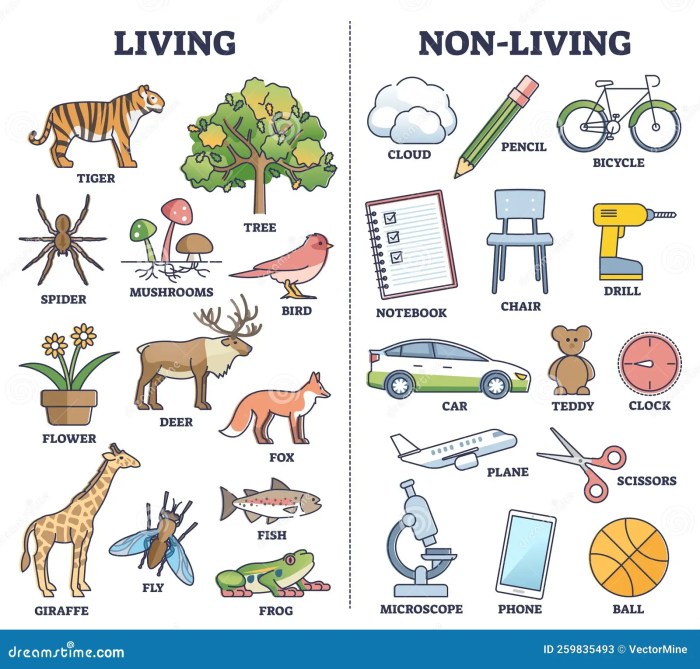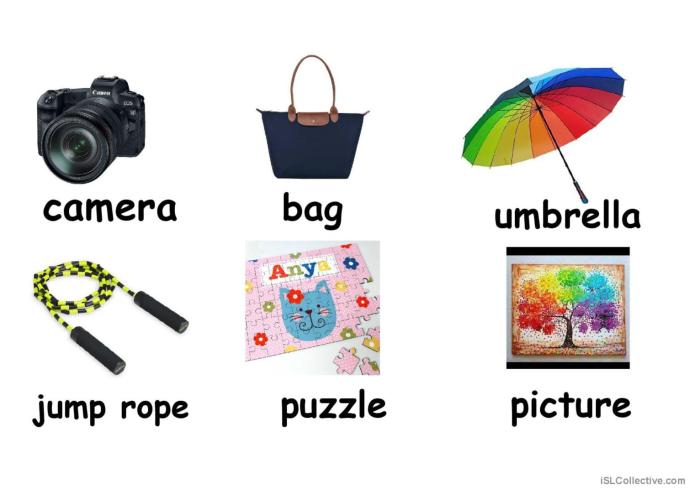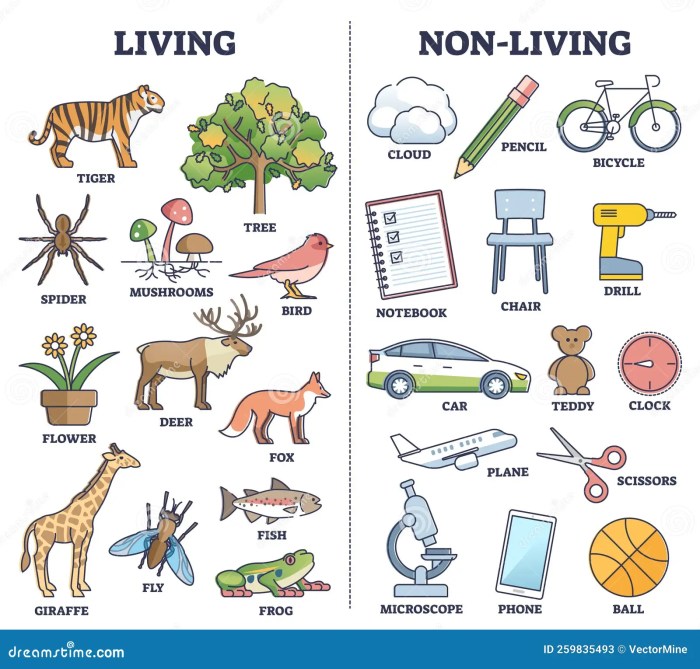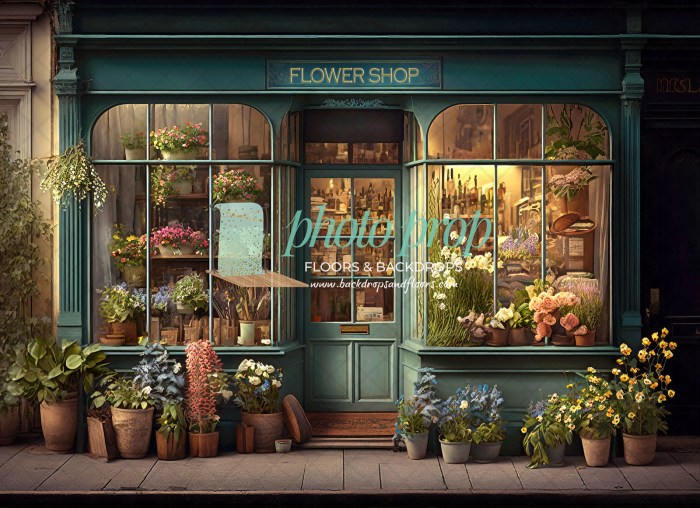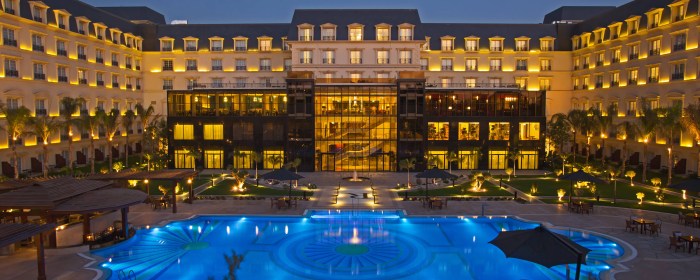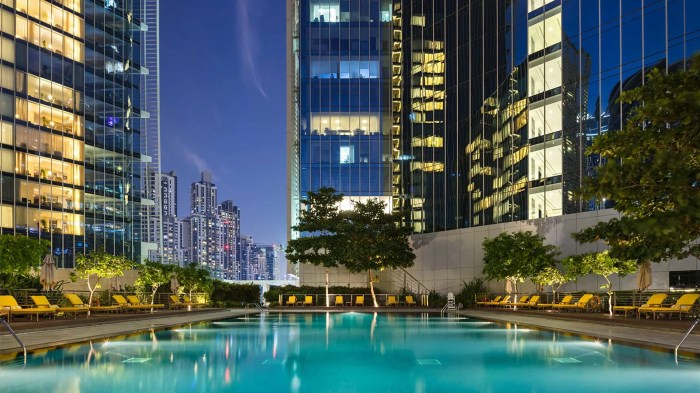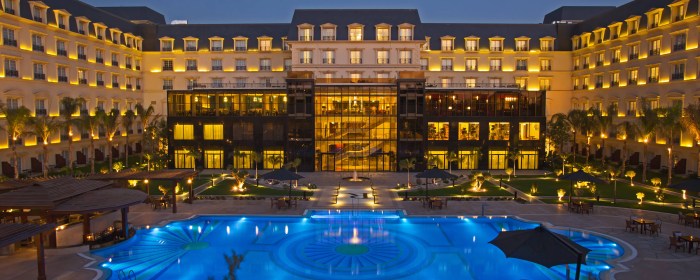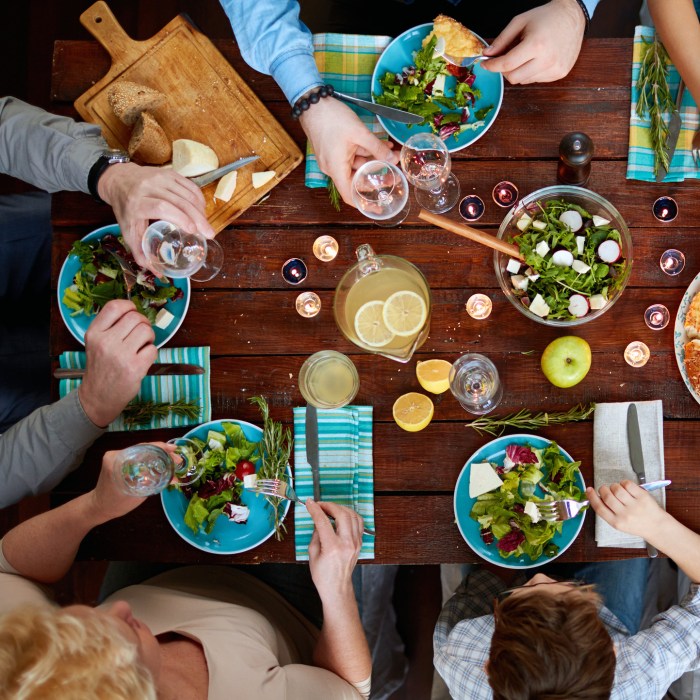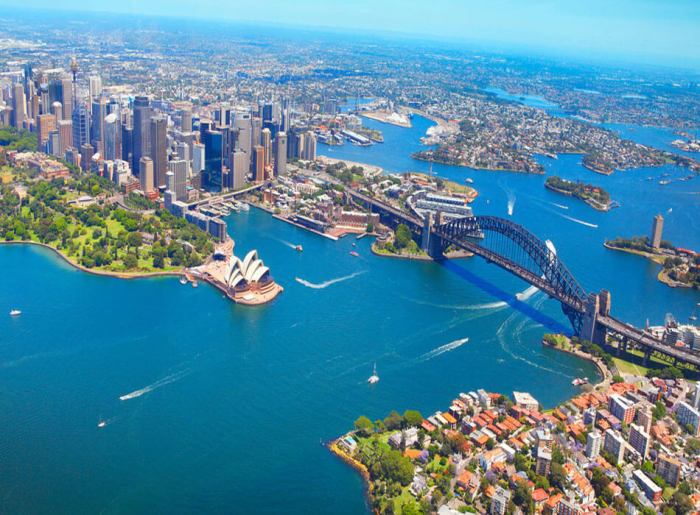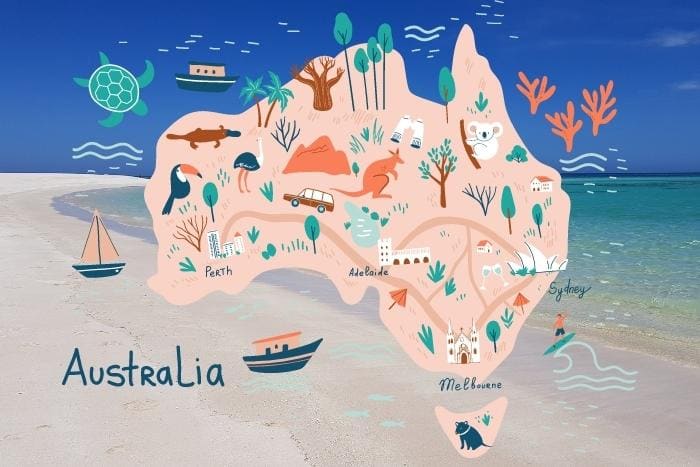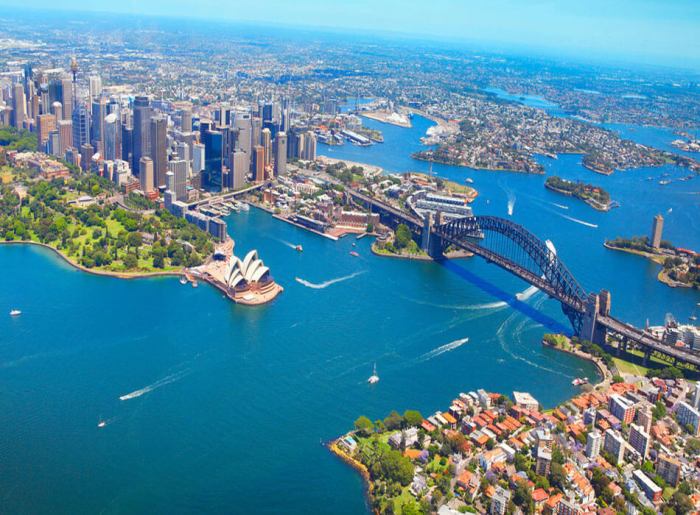Faroe Islands on a budget sets the stage for an incredible adventure. Imagine exploring the dramatic landscapes, charming villages, and unique culture of the Faroe Islands without breaking the bank. This guide will reveal the secrets to experiencing this breathtaking archipelago on a limited budget, from finding affordable accommodations to planning cost-effective meals and transportation.
We’ll delve into the practical aspects of budget travel, exploring various accommodation options, affordable dining experiences, and savvy transportation strategies. Plus, we’ll uncover free and low-cost activities to maximize your enjoyment of the islands. Get ready to uncover hidden gems and create unforgettable memories without overspending!
Introduction to Budget Travel in the Faroe Islands
The Faroe Islands, a remote archipelago in the North Atlantic, offer a unique blend of dramatic landscapes, charming villages, and opportunities for outdoor adventures. Despite their stunning beauty and rich culture, the islands present a surprising opportunity for budget travelers, especially when compared to other popular European destinations. Planning carefully and embracing the local experiences can make a big difference in keeping costs down while maximizing your enjoyment.The Faroe Islands are not a typical budget-friendly destination.
Accommodation, transport, and some activities can be more expensive than in many other European countries. However, with a little ingenuity and forethought, a memorable trip can be crafted without breaking the bank. A key to successful budget travel in the Faroe Islands is to anticipate costs and plan accordingly.
Typical Costs in the Faroe Islands
The cost of travel in the Faroe Islands varies based on your choices. Accommodation ranges widely. Hostels are often a good option for budget travelers, offering shared rooms and a chance to meet fellow travelers. Budget-friendly hotels and guesthouses also exist, but availability and pricing can fluctuate depending on the season. Food costs can be managed by utilizing local grocery stores and preparing some meals yourself.
While restaurants are a treat, they can be more expensive than other destinations. Activities such as hiking, exploring the villages, and scenic drives are often affordable. However, tours and boat trips can increase your expenditure.
Importance of Planning Ahead
Planning ahead is crucial for a budget-friendly trip to the Faroe Islands. Booking accommodations and tours in advance, especially during peak season, can often secure better rates. Researching local markets and grocery stores can help you prepare meals and reduce restaurant expenses. Understanding the public transportation system, if any, can help minimize transport costs. This proactive approach allows you to be more flexible and spontaneous while staying within your budget.
Accommodation Options
A variety of accommodation options are available for different budgets. Hostels offer dorm rooms, a sociable environment, and the opportunity to connect with other travelers. Budget-friendly hotels and guesthouses are a good alternative, often offering basic amenities and reasonable prices. Consider carefully the type of accommodation that suits your needs and preferences. Sharing accommodation, like staying in a hostel, can drastically reduce expenses.
Food and Drink
Local groceries are a cost-effective way to obtain food and drinks. Preparing some meals yourself can save significant amounts of money, particularly if you opt for local produce and affordable staples. While dining out can be an enjoyable experience, consider the cost of meals and the possibility of preparing some of your meals.
Transportation
Transportation costs can be managed by considering public transport options, if available. Alternatively, exploring the islands on foot, by bicycle, or by renting a car can be economical, depending on the distances involved. Factor in the cost of fuel if you choose a rental car. Consider the different transportation options carefully, and make sure they align with your budget and the distances you plan to cover.
Activities and Attractions
The Faroe Islands offer a wealth of free activities. Hiking trails, scenic drives, and exploring the charming villages can provide unforgettable experiences without significant costs. Consider the value of experiences versus paid tours or activities. Research local events and festivals to see if they align with your interests and budget. Consider whether you want a guided tour or if you prefer exploring independently.
This will influence your budget significantly.
Accommodation Options on a Budget
Finding affordable lodging is crucial for maximizing your Faroe Islands adventure without breaking the bank. The archipelago’s stunning scenery and unique culture are well worth experiencing, but the cost of travel can quickly escalate if not planned carefully. Fortunately, a range of budget-friendly options are available, ensuring you can enjoy the islands’ beauty without sacrificing your travel budget.
Budget-Friendly Accommodation Types
Various accommodation types cater to budget travelers, each with its own set of advantages and disadvantages. Understanding these nuances will help you choose the best fit for your needs and travel style.
- Hostels: Hostels offer a social and budget-friendly environment, particularly appealing to solo travelers and backpackers. Shared dorm rooms provide a cost-effective way to stay connected with fellow travelers while experiencing a sense of community. Many hostels provide common areas for socializing, and often have kitchen facilities for preparing meals. A key consideration is the location; some hostels might be situated further from the main attractions, adding to travel time.
However, their central location in popular areas can be a significant advantage.
- Guesthouses: Guesthouses represent a mid-point between hostels and hotels. They typically provide private rooms, often with en-suite bathrooms, at a more affordable rate than hotels. Guesthouses are often family-run, creating a personal touch and potentially offering more local insights. Some guesthouses are located in rural areas, offering a unique, quiet experience. Others are positioned in popular tourist hubs, granting easy access to shops and restaurants.
- Homestays: Homestays offer a deeply immersive cultural experience. Guests stay with local families, sharing meals and gaining firsthand knowledge of Faroese culture and traditions. The experience can be highly rewarding, offering a personalized understanding of local life. However, this unique immersion may come with a limited range of amenities, compared to other accommodations. The accommodation’s proximity to attractions may vary.
This option can offer an exceptional value, especially when combined with self-catering.
Comparing Accommodation Types
The following table provides a comparative overview of various accommodation options, considering price ranges, amenities, and locations.
| Accommodation Type | Price Range (Approximate) | Amenities | Typical Location |
|---|---|---|---|
| Hostels | €20-€50 per night | Shared bathrooms, kitchen facilities, common areas | Usually in town centers or near tourist attractions |
| Guesthouses | €50-€100 per night | Private rooms, en-suite bathrooms, often breakfast included | Often in town centers or near tourist attractions |
| Homestays | €30-€70 per night | Shared or private rooms, meals (often), cultural immersion | Varying, from rural areas to towns |
Finding Deals and Discounts
Finding discounts on accommodation is a key strategy for budget travelers. Websites like Booking.com, Expedia, and Airbnb often offer special deals and promotions. Checking for last-minute deals and utilizing loyalty programs are valuable strategies. Consider traveling during the shoulder seasons, as prices often fluctuate based on the tourist season. Also, look for packages that bundle accommodation with other services like tours or activities.
For instance, a tour operator might offer a discounted package including accommodation and transportation.
Strategies for Finding the Best Value
Combining various strategies maximizes your chances of finding the best value for money. Flexibility with dates and locations can significantly impact pricing. Booking in advance, especially during peak season, can secure better rates. Comparing prices across multiple platforms and websites can ensure you find the best available deal. Exploring alternative accommodations like guesthouses or homestays often leads to more affordable options.
Looking for off-season discounts, which are common in many destinations, is also important. For instance, if your trip aligns with a local festival, you may find accommodations priced lower than usual.
Food and Drink on a Budget
Fueling your Faroe Islands adventure on a shoestring budget requires strategic planning. Local Faroese cuisine, while delicious, can be expensive if not approached with savvy. This section details cost-effective strategies to savor the islands’ flavors without breaking the bank.Savoring the flavors of the Faroe Islands doesn’t have to drain your wallet. By understanding local pricing and utilizing budget-friendly options, you can experience the unique culinary scene without compromising your travel funds.
Cost-Effective Ways to Enjoy Local Cuisine, Faroe islands on a budget
Local restaurants and cafes often offer set menus or “specials” that represent excellent value. These options frequently include multiple courses, providing a complete dining experience at a more affordable price point. Similarly, smaller, family-run eateries are a treasure trove of authentic, home-style Faroese dishes at very competitive rates.
Finding Affordable Eateries and Local Markets
Local markets are a fantastic way to encounter fresh, local produce and ingredients at affordable prices. They frequently offer opportunities to interact with the community and discover hidden gems of local cuisine. Look for markets located near tourist centers or residential areas for convenience. Many local supermarkets offer excellent value for groceries, especially if you plan your meals and buy in bulk.
Meal Planning to Control Food Costs
Careful meal planning is crucial for keeping food expenses in check. Creating a daily meal plan in advance helps you estimate your food needs and avoid impulse purchases. This strategy can be incredibly useful, especially when traveling to areas with limited supermarket options. By understanding the costs of different food groups and beverages, you can make informed choices that align with your budget.
Comparing Prices of Different Food and Beverages
Prices for different food and beverage items in the Faroe Islands vary. Local produce and seafood, when in season, often provide the most cost-effective options. For example, fresh fish caught locally is generally cheaper than imported options. Also, consider that bottled water, while often available, might be more expensive than local tap water.
Utilizing Local Supermarkets for Affordable Groceries
Local supermarkets provide a convenient and affordable way to stock up on groceries. They often offer a wide selection of both local and imported products, allowing you to tailor your shopping to your budget. Taking advantage of supermarket deals and sales can significantly reduce food costs. Don’t underestimate the value of buying in bulk if you’re staying in one location for a few days.
Exploring the Faroe Islands on a budget can be surprisingly achievable! While planning a trip, you might also consider a fantastic fishing adventure in Alaska, like the ones detailed in plan fishing trip in alaska. Luckily, the Faroe Islands offer incredible hiking trails and charming villages that don’t break the bank, making it a perfect budget-friendly destination.
So, if you’re looking for a unique and affordable getaway, the Faroe Islands should be on your list!
Sample Daily Meal Plan for Budget Travelers
This sample plan provides a framework for budget-conscious travelers. It focuses on utilizing affordable local ingredients.
| Meal | Description | Estimated Cost (Approximate) |
|---|---|---|
| Breakfast | Oatmeal with fruit and milk (from local supermarket) | $5-7 |
| Lunch | Sandwiches with local cheese and bread (from local supermarket) | $6-8 |
| Dinner | Grilled fish with potatoes and salad (from local supermarket) | $10-15 |
Note: Prices are estimates and may vary based on the specific supermarket, season, and availability.
Transportation Strategies
Getting around the Faroe Islands on a budget requires careful planning and utilizing the available options. The islands’ unique geography, with its dramatic fjords and rugged terrain, often necessitates a mix of methods to maximize your time and minimize costs. Ferries, buses, and even walking are vital components for a cost-effective Faroese adventure.Exploring the Faroe Islands often involves a combination of different transportation methods to fully experience the islands’ beauty.
Planning routes that minimize travel costs and maximize scenic views is key to a successful budget trip. This section will explore the most cost-effective strategies for getting around.
Affordable Bus Travel
Public buses are a fundamental part of the Faroese transportation system. They connect most major towns and villages, offering a convenient and often affordable way to traverse the archipelago. Understanding bus routes and schedules is crucial for maximizing your time and minimizing travel costs.
- Purchase a Faroe Islands Tourist Pass. This pass can offer significant savings on multiple transportation methods, including buses. The cost of the pass can be recouped through the savings on bus fares.
- Plan your bus routes in advance, checking online schedules and routes before you go. Utilizing bus schedules in advance allows for efficient time management.
- Consider bus connections when planning your day trips. Bus routes are often integrated, allowing you to reach remote locations by connecting buses.
Ferry Travel Options
Ferries are another vital transportation method for reaching different islands within the Faroe Islands. They offer a unique perspective of the rugged coastline, and their costs can be comparable to other options when planned efficiently.
- Book ferry tickets in advance to potentially secure lower fares. Many ferry companies offer discounts for booking in advance.
- Consider the ferry schedule when planning your activities. This will help you avoid extra costs associated with waiting for the next ferry.
- Ferries often provide scenic views of the Faroese coastline, making them a worthwhile experience, even if the cost is slightly higher than other options.
Walking and Hiking
The Faroe Islands are a hiker’s paradise, with many trails offering breathtaking views. Walking is an excellent and free way to explore smaller islands or sections of larger islands.
- Many walking trails offer incredible views and opportunities for outdoor recreation, making them a cost-effective way to explore the islands.
- Walking can be a great way to explore the local villages and countryside, minimizing transportation costs. Plan your routes and consider using a map to optimize your exploration.
Cost Comparison Table
| Transportation Method | Cost (Approximate, per trip) | Suitability |
|---|---|---|
| Bus | $5 – $15 | Connecting towns and villages; suitable for day trips |
| Ferry | $10 – $30 | Reaching different islands; scenic views |
| Walking | Free | Exploring smaller areas, villages, and parts of larger islands; suitable for hikers |
Planning your transportation in advance is crucial to saving money and maximizing your time exploring the Faroe Islands. Utilizing the available public transportation options, such as buses and ferries, will minimize costs and allow you to enjoy the islands’ unique beauty.
Activities and Experiences: Faroe Islands On A Budget

The Faroe Islands offer a plethora of activities, from breathtaking hikes to charming cultural encounters. Budget travelers can experience the magic of these islands without emptying their wallets. Embrace the opportunity to immerse yourself in the unique landscapes and traditions, focusing on free or low-cost options.Exploring the Faroe Islands on a budget involves strategic planning and a willingness to embrace the beauty of the islands at their own pace.
Walking, cycling, and utilizing free attractions will allow you to savor the journey without unnecessary expenses. Focus on activities that maximize your enjoyment of the scenery and local culture.
Free and Low-Cost Activities
Many of the Faroe Islands’ most captivating experiences are free or require minimal expenditure. Hiking trails, scenic viewpoints, and charming villages often don’t cost a penny. This allows for a deeper immersion in the islands’ natural beauty.
Planning a budget-friendly trip to the Faroe Islands? You might be surprised at how affordable it can be! While the Faroe Islands aren’t exactly known for their beaches, if you’re looking for some fantastic cheap beach vacation ideas, checking out trip ideas beach vacations cheap beach vacation could give you some inspiration for alternative destinations. Still, the Faroe Islands offer plenty of stunning landscapes and unique experiences without breaking the bank, making it a great budget travel option.
- Hiking: The Faroe Islands boast an extensive network of hiking trails offering unparalleled views of the dramatic coastline, picturesque villages, and dramatic cliffs. These trails are readily accessible and allow for exploration at your own pace. Packing a picnic lunch further reduces costs.
- Coastal Walks: Strolling along the Faroese coastline provides breathtaking views of towering cliffs, cascading waterfalls, and dramatic sea stacks. Enjoy the fresh air and the unique beauty of the islands.
- Village Exploration: Visiting charming villages like Tórshavn, Mykines, or Saksun offers a glimpse into local life and culture. Wander through the streets, admire the architecture, and discover local shops.
Exploring on Foot or by Bike
The Faroe Islands are perfect for exploration on foot or by bike. This mode of transportation allows you to fully immerse yourself in the local environment and discover hidden gems.
- Walking: The islands’ interconnected network of footpaths provides opportunities for leisurely strolls, allowing you to discover hidden coves, charming villages, and breathtaking vistas. Many hiking trails can be found along the coast.
- Cycling: Renting a bike allows you to traverse the islands at your own pace, uncovering scenic routes and hidden landscapes. This provides a unique perspective of the landscape.
Accessing Free or Low-Cost Attractions
Many of the Faroe Islands’ attractions are free to visit, making it easy to enjoy the islands’ beauty without breaking the bank. Understanding the best ways to access these attractions is key.
Planning a trip to the Faroe Islands on a budget can be surprisingly achievable! While the islands are beautiful, finding affordable accommodations can be tricky. If you’re looking for luxurious options, though, consider checking out hotels and resorts like the Tryall Club in Jamaica; it’s a fantastic option for a truly special experience. hotels resorts tryall club jamaica private But, if your Faroe Islands budget is tighter, there are still plenty of budget-friendly options for hostels, guesthouses, and self-catering apartments to explore.
- Public Transportation: Utilizing the local public transportation system, when available, can be a cost-effective way to travel between villages and experience the beauty of the islands. This is an excellent way to see multiple locations without spending money on taxis.
- Free Walking Tours: While formal walking tours often incur a fee, informal walks and self-guided tours can be organized through local community centers or online resources. This approach allows for a more personal and budget-friendly experience.
Suggested Activities for Budget Travelers
The following list suggests activities that offer an engaging experience without significant cost.
- Exploring the Tórshavn harbor and the surrounding areas. This includes walking along the harbor, exploring the shops, and admiring the views.
- Visiting the local markets to sample fresh produce and local products. This is a great way to interact with the local community.
- Enjoying the local cuisine in local restaurants and cafes, which often provide affordable options.
Cultural Experiences on a Budget
The Faroe Islands offer rich cultural experiences that don’t require substantial expenditures.
- Visiting local museums: Many museums offer free or low-cost entry, providing insights into the Faroese history, art, and culture. Check for special events or discounts.
- Attending local events and festivals: These events are often free or have very reasonable entry fees, offering a chance to experience local traditions and festivities. Look for events related to music, arts, and culture.
Budget-Friendly Tours and Excursions
Numerous low-cost tours and excursions are available in the Faroe Islands, often organized by local businesses.
- Self-guided tours: Exploring the islands independently is a great way to save money and experience the islands at your own pace. Utilize online resources and local guides for detailed information.
- Contact local tour operators: Contact local tour operators for customized options that fit your budget and interests. Often, a small group tour is more cost-effective than a large-group tour.
Essential Packing List for Budget Travelers
Budget travel often means packing light to avoid baggage fees and maximize space. A well-planned packing list allows you to carry only the essentials, ensuring comfort and flexibility throughout your trip to the Faroe Islands. This guide details a comprehensive packing list, emphasizing versatile items and efficient packing strategies to help you save money and have a fantastic trip.Careful planning is crucial for minimizing baggage fees and maximizing the space in your chosen luggage.
Prioritizing lightweight, versatile clothing items will reduce the overall weight of your bag, which directly impacts your potential baggage fees.
Clothing Essentials
Packing light doesn’t mean sacrificing style or comfort. Choose versatile clothing items that can be mixed and matched for various occasions. This approach is vital for minimizing the overall weight and maximizing the utility of your garments.
- Base Layers (tops and bottoms): Moisture-wicking materials are ideal for staying comfortable in fluctuating weather conditions. Consider merino wool or synthetic fabrics for warmth and quick-drying properties.
- Fleece or lightweight jacket: A versatile piece for layering on cooler evenings or when exploring higher altitudes.
- Waterproof or water-resistant outer layer: Essential for unpredictable weather. A lightweight raincoat or a packable waterproof jacket will protect you from unexpected showers.
- Comfortable walking shoes: Hiking boots or sturdy walking shoes are essential for exploring the Faroe Islands’ varied terrain. Choose a comfortable pair that can handle various surfaces.
- Versatile bottoms (trousers or jeans): Jeans are versatile for a variety of situations. Consider a pair of comfortable trousers for added warmth or layering.
- Casual tops (t-shirts, long-sleeved shirts): Pack a mix of comfortable tops that can be worn for different activities and in various weather conditions.
- Swimsuit: If you plan on visiting beaches or swimming in the ocean, a swimsuit is a must.
- Hat and gloves: Pack a hat and gloves for warmth, especially if visiting during the colder months.
Toiletries and Accessories
Minimize your toiletries by choosing multi-purpose items and travel-sized containers.
- Travel-sized toiletries: Choose travel-sized containers to avoid exceeding baggage limits and save space. Consider solid toiletries like shampoo bars or conditioner bars for further space savings.
- Sunscreen and lip balm: These are essential for sun protection, especially during outdoor activities. Choose high-SPF sunscreen and lip balm for added protection.
- First-aid kit: Pack a basic first-aid kit with essential medications, bandages, and pain relievers.
- Small backpack or day bag: Useful for carrying essentials during excursions and day trips.
- Reusable water bottle: Staying hydrated is important, and a reusable water bottle helps you reduce plastic waste.
- Reusable shopping bags: Helpful for groceries and souvenirs. These are eco-friendly and help save space in your luggage.
Electronics and Documents
Pack only the essential electronics and documents to avoid unnecessary weight.
- Camera and charger: A camera is a great way to capture memories of your trip.
- Portable charger: A portable charger is essential for keeping your devices charged on the go.
- Phone and charger: A phone is essential for communication and navigation.
- Travel adapter: If needed, a travel adapter will allow you to charge your devices in the Faroe Islands.
- Passport, visa (if required), and tickets: Keep these documents secure and readily accessible.
- Copies of important documents: Having copies of important documents can help if you lose your originals.
Packing Strategies for Different Budgets
Different packing strategies can be tailored to suit different budgets.
| Budget Level | Packing Strategy |
|---|---|
| Budget-conscious | Prioritize versatile clothing items and choose lightweight options. Maximize space by rolling clothes instead of folding them. |
| Mid-range | Pack a wider variety of clothing options to accommodate different activities. Consider lightweight, foldable luggage to save space. |
| Luxury | Pack more specific clothing items for various occasions. Invest in high-quality, durable luggage to minimize wear and tear. |
Tips for Saving Money
Budget travel in the Faroe Islands is achievable with careful planning and smart choices. Maximizing savings allows you to experience more of this breathtaking archipelago without breaking the bank. This section dives into strategies for minimizing expenses while maximizing your adventures.Understanding the local cost structure is crucial. Accommodation, food, and activities can vary significantly in price depending on the season and your choices.
Being flexible and open to different options is key to achieving a balanced budget.
Using Travel Apps for Discounts
Travel apps are invaluable tools for finding discounts and deals on flights, accommodations, and activities. Many apps aggregate offers from various providers, allowing you to compare prices and find the best deals quickly. By utilizing these platforms, you can significantly reduce travel costs and save money on your trip. For instance, apps like Skyscanner or Google Flights can help you find the cheapest flights to the Faroe Islands, while Booking.com or Airbnb can assist you in securing affordable accommodations.
Leveraging Travel Credit Cards and Loyalty Programs
Travel credit cards often come with perks that can help you save money. These can include rewards points for every dollar spent, which can be redeemed for discounts on flights or accommodations. Furthermore, loyalty programs offered by airlines or hotels can accumulate points that can be exchanged for free flights, hotel stays, or other perks. Be sure to compare the benefits of different travel cards and loyalty programs before making a decision.
This comparison allows you to find the best card to meet your specific needs and spending habits.
Finding and Using Coupons and Promotional Codes
Many companies and websites offer coupons or promotional codes that can help you save money. Utilizing these discounts can drastically reduce the overall cost of your trip. Websites like Groupon or local travel sites often list deals for attractions and tours. Checking these resources before booking can yield significant savings. Actively searching for coupons or promotional codes before making a purchase can lead to substantial cost reductions.
Comparing Money-Saving Strategies
Different money-saving strategies have varying benefits and drawbacks. For example, while utilizing travel apps can provide quick access to deals, it might require more time to compare options compared to checking individual websites. Similarly, while travel credit cards offer rewards, they can come with annual fees that might negate the benefits if not used strategically. Understanding the trade-offs associated with each strategy will allow you to create a customized plan that aligns with your budget and travel style.
Careful consideration of each method is essential to maximizing savings.
| Strategy | Benefits | Drawbacks |
|---|---|---|
| Travel Apps | Quick access to deals, comprehensive comparisons | Potentially requires more time for comparison, may not cover all providers |
| Credit Cards/Loyalty Programs | Potential for substantial rewards, access to exclusive offers | Annual fees, potential for overspending if not managed carefully |
| Coupons/Promotional Codes | Significant savings on specific items or services | May require extensive searching, deals might be time-sensitive |
Troubleshooting Budget Travel

Budget travel, while rewarding, often presents unforeseen challenges. The Faroe Islands, with its stunning landscapes and unique culture, can be expensive. Knowing how to anticipate and address potential issues is crucial to enjoying your trip without sacrificing your financial plan. This section will equip you with strategies to navigate unexpected expenses and keep your Faroe Islands adventure on track, even when your budget shifts.Unexpected expenses can derail any travel plan, especially on a budget.
The beauty of the Faroe Islands, while captivating, can also come with hidden costs. Understanding how to adjust your plans when faced with these situations is key to maximizing your experience while minimizing financial strain.
Anticipating Unforeseen Circumstances
Budget travel often requires flexibility and adaptability. The Faroe Islands, while generally accessible, can present weather-related disruptions or unexpected costs. Anticipating potential problems, such as bad weather or ferry cancellations, allows you to adjust your plans proactively. Consider alternative activities, backup transportation options, and contingency funds.
Managing Unexpected Expenses
Unexpected costs are part of any trip, especially when traveling on a limited budget. In the Faroe Islands, unexpected ferry delays or last-minute accommodation changes can quickly eat into your funds. Having a small emergency fund dedicated to your trip is essential. This can cover unforeseen expenses like increased accommodation costs, or even a change in transportation due to bad weather.
Adapting Your Travel Plans
A flexible approach is vital for budget travelers. Adjusting your travel plans when your budget changes is not a sign of failure, but rather a testament to your ability to adapt. If ferry schedules change or accommodation costs increase, consider alternative routes or activities. For instance, if your budget is squeezed, opt for less expensive activities like hiking or exploring local villages instead of pricey tours.
Making the Most of Your Budget During Unforeseen Circumstances
Even during unforeseen circumstances, you can still make the most of your budget. Embrace the flexibility of your itinerary. If a planned activity becomes unavailable or expensive, consider alternative options. For example, if a hike is too challenging due to weather, you can explore a local museum or take a stroll through a charming village.
Examples of Budget Adjustments
Imagine your initial budget was focused on day trips to various islands, but a ferry cancellation necessitates a change. Instead of giving up on the islands, consider adjusting to a longer stay on one island. Explore the local shops and enjoy more of the island’s attractions. Another example: If your initial accommodation plans become more expensive, consider camping or utilizing budget-friendly guesthouses.
These accommodations often provide a unique cultural experience. Finding local markets and utilizing public transportation will help you save money on food and transportation. These adjustments allow you to maintain your travel experience while staying within your budget.
Conclusive Thoughts
Embarking on a budget-friendly adventure in the Faroe Islands is achievable with careful planning and a little creativity. By choosing the right accommodations, utilizing public transport, and embracing free activities, you can fully immerse yourself in the beauty and culture of these stunning islands without emptying your wallet. This comprehensive guide provides the tools you need to create your perfect Faroe Islands adventure, all while staying within your budget.
Enjoy!

